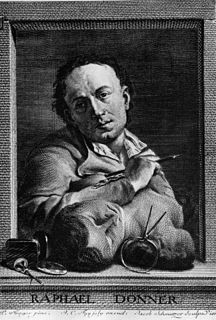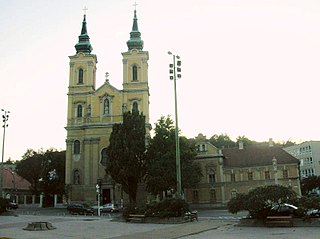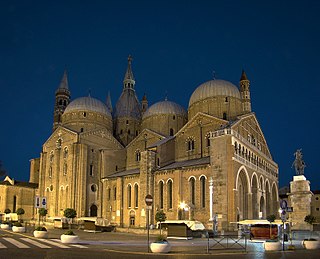This article needs additional citations for verification .(July 2009) (Learn how and when to remove this template message) |
Coordinates: 48°14′50.53″N17°4′0.75″E / 48.2473694°N 17.0668750°E

A geographic coordinate system is a coordinate system that enables every location on Earth to be specified by a set of numbers, letters or symbols. The coordinates are often chosen such that one of the numbers represents a vertical position and two or three of the numbers represent a horizontal position; alternatively, a geographic position may be expressed in a combined three-dimensional Cartesian vector. A common choice of coordinates is latitude, longitude and elevation. To specify a location on a plane requires a map projection.

Chapel of the Holy well is a chapel located in Marianka, Slovakia. Rotunda Chapel of the Holy well was commissioned in 1696 for 1000 golden coins by earl Paul Eszterhazy and local baron Ján Macholány, who can be found pictured with his family on one of the ceiling frescos. In 1722, a renovated baroque altar was built, replacing the original one. In 1877, the statues of St. Anthony and St. Paul the Hermits were erected in front of the chapel. These statues came from the workshop of Rafael Donner, eventually being replaced by replicas created in Brno in 1981. Originals were transferred to the Slovak National Gallery, where they are a part of the original Baroque Art exhibition. [1] The chapel was constructed directly above the stream, out of which the water is directed to the front of the chapel directly accessible to the visitors. The stream beneath was reported to have miraculous healing effect on physically handicapped pilgrims visiting the site.[ citation needed ] In the book of Kummer from the record of the local cloister, 140 recoveries were reported between 1634 - 1730.[ citation needed ]

Marianka is a village and municipality in western Slovakia in Malacky District in the Bratislava region, in the foothills of the Little Carpathians. The village is the oldest pilgrimage site in Slovakia and the first pilgrimage site dedicated to Virgin Mary in the area of former Hungarian Kingdom. It used to be as famous as the well known Mariazell in Austria and the Polish pilgrimage place Częstochowa. The communist regime between years 1948-1989 suppressed all religious activity and the village as a pilgrimage site was planned for demise, however the village survived.

Slovakia, officially the Slovak Republic, is a landlocked country in Central Europe. It is bordered by Poland to the north, Ukraine to the east, Hungary to the south, Austria to the west, and the Czech Republic to the northwest. Slovakia's territory spans about 49,000 square kilometres (19,000 sq mi) and is mostly mountainous. The population is over 5.4 million and consists mostly of Slovaks. The capital and largest city is Bratislava, and the second largest city is Košice. The official language is Slovak.

Georg Rafael Donner was one of the most prolific Austrian sculptors of the 18th century. His style was baroque with some pseudo-ancient additions. He educated many German sculptors of his era, including his son Matthäus Donner.
















